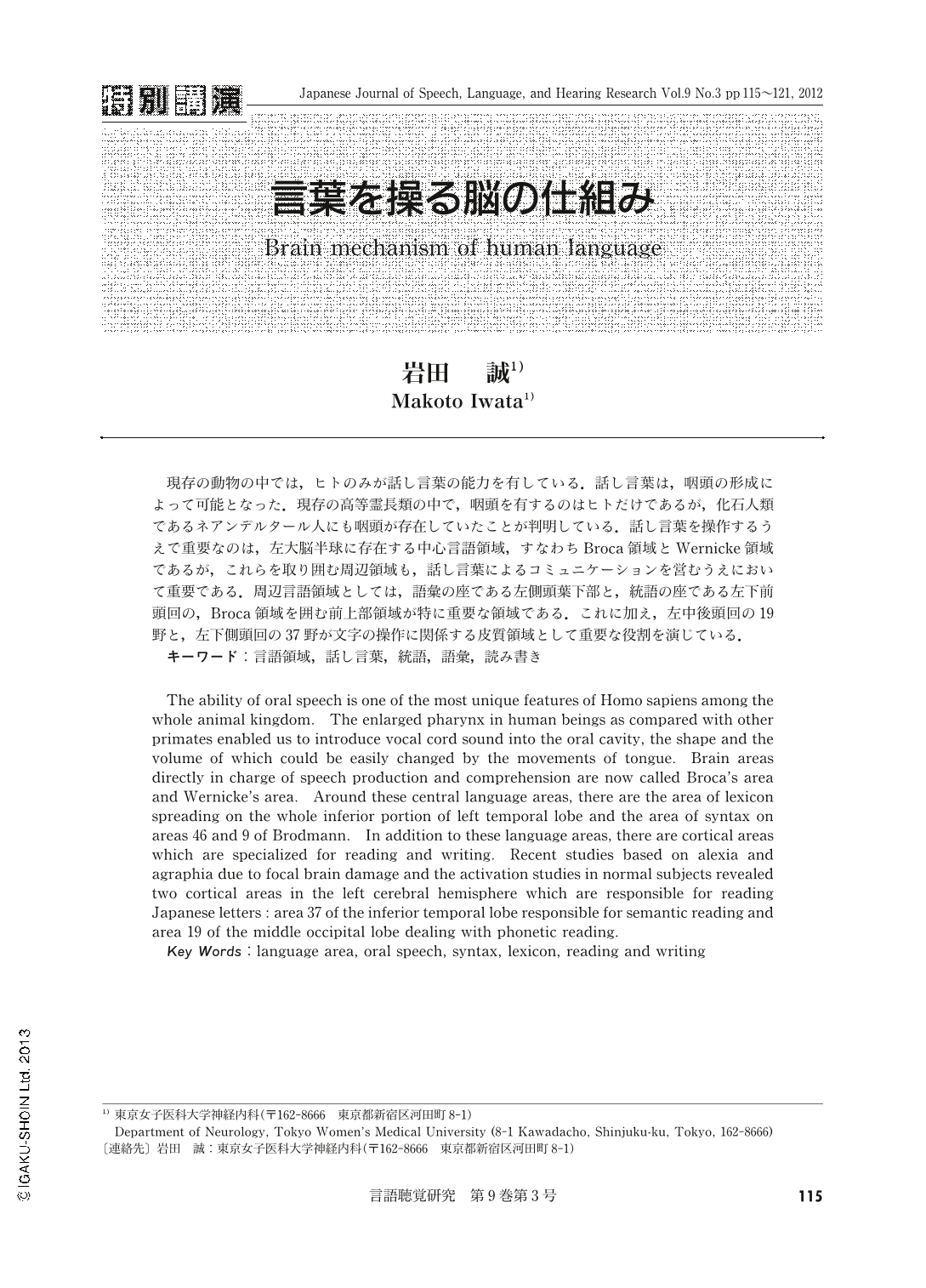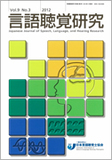Japanese
English
- 有料閲覧
- Abstract 文献概要
- 1ページ目 Look Inside
- 参考文献 Reference
現存の動物の中では,ヒトのみが話し言葉の能力を有している.話し言葉は,咽頭の形成によって可能となった.現存の高等霊長類の中で,咽頭を有するのはヒトだけであるが,化石人類であるネアンデルタール人にも咽頭が存在していたことが判明している.話し言葉を操作するうえで重要なのは,左大脳半球に存在する中心言語領域,すなわちBroca領域とWernicke領域であるが,これらを取り囲む周辺領域も,話し言葉によるコミュニケーションを営むうえにおいて重要である.周辺言語領域としては,語彙の座である左側頭葉下部と,統語の座である左下前頭回の,Broca領域を囲む前上部領域が特に重要な領域である.これに加え,左中後頭回の19野と,左下側頭回の37野が文字の操作に関係する皮質領域として重要な役割を演じている.
The ability of oral speech is one of the most unique features of Homo sapiens among the whole animal kingdom. The enlarged pharynx in human beings as compared with other primates enabled us to introduce vocal cord sound into the oral cavity, the shape and the volume of which could be easily changed by the movements of tongue. Brain areas directly in charge of speech production and comprehension are now called Broca's area and Wernicke's area. Around these central language areas, there are the area of lexicon spreading on the whole inferior portion of left temporal lobe and the area of syntax on areas 46 and 9 of Brodmann. In addition to these language areas, there are cortical areas which are specialized for reading and writing. Recent studies based on alexia and agraphia due to focal brain damage and the activation studies in normal subjects revealed two cortical areas in the left cerebral hemisphere which are responsible for reading Japanese letters: area 37 of the inferior temporal lobe responsible for semantic reading and area 19 of the middle occipital lobe dealing with phonetic reading.

Copyright © 2012, Japanese Association of Speech-Language-Hearing Therapists. All rights reserved.


